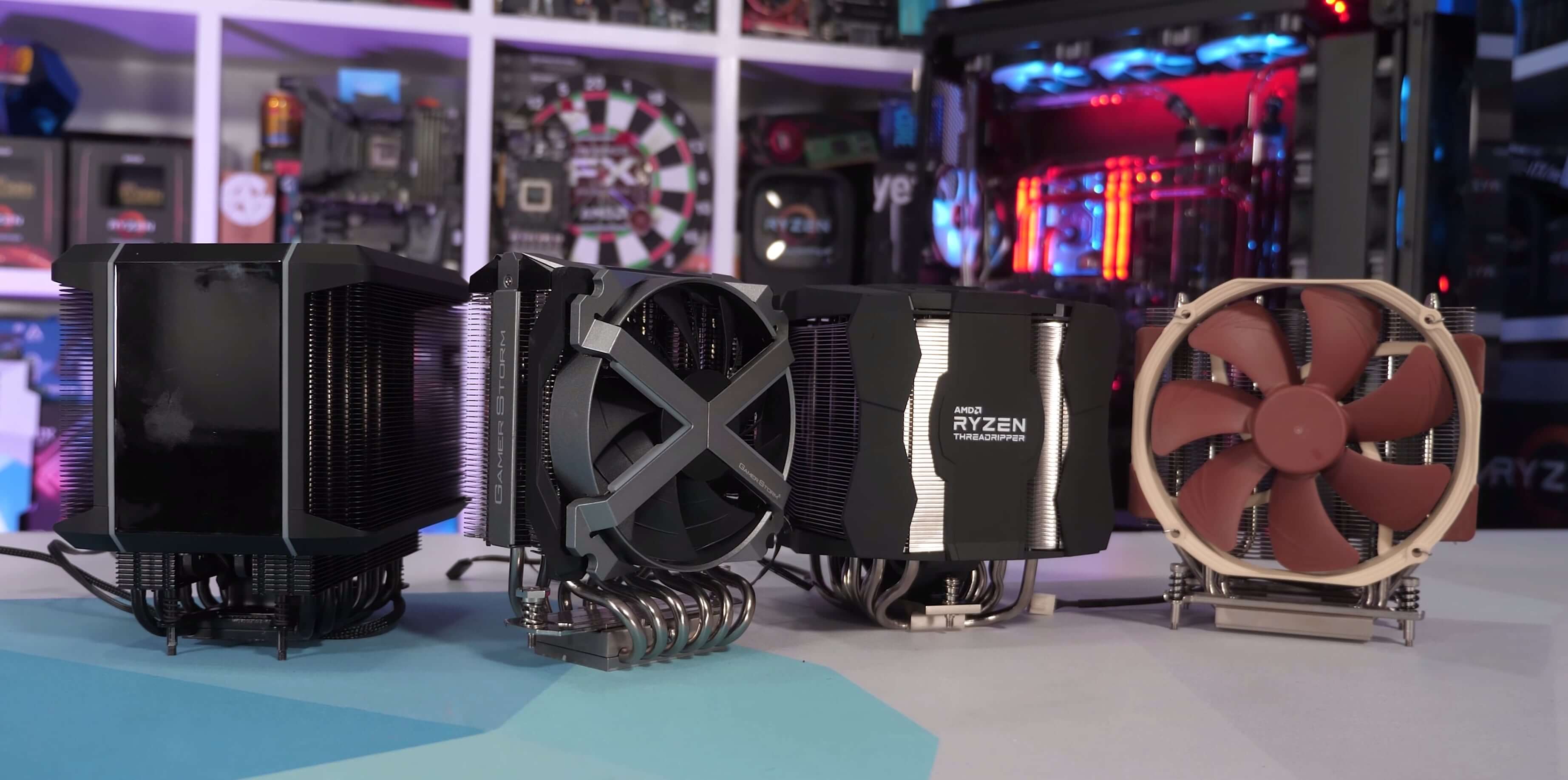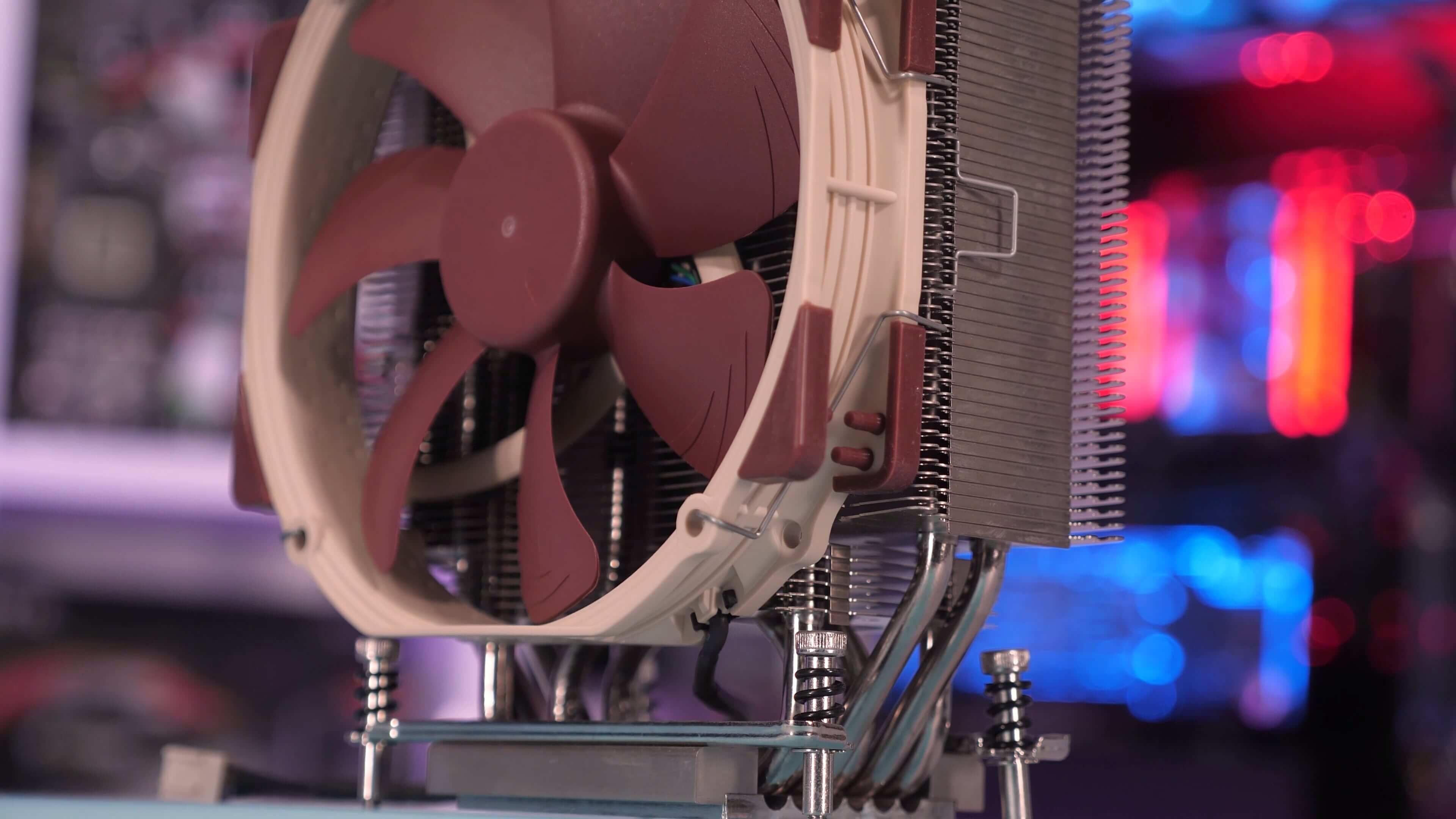After reviewing the Threadripper 3990X, it was made clear the 64-core/128-thread beast from AMD lays waste to every HEDT part we have ever tested. It's an insane productivity CPU, that we pushed to extremes to torture a few motherboards just this week. Then we thought, why not try out some big bulky coolers as well?
To date all our TR 3990X testing has been conducted using a large 360mm custom loop setup with Corsair's HydroX bits. This allowed us to keep the 64-core part under 70C during an hour-long Blender stress test, though as expected temperatures did climb rapidly when overclocking, peaking at over 90 degrees.
This had us wondering just how practical air-cooling the 3990X would be, especially for those wanting to overclock. As luck would have it, on hand we had four purpose-built Threadripper air-coolers from the likes of Noctua, Arctic, DeepCool and Cooler Master.
For testing we're using the DeepCool New Ark 90SE case from our VRM test setup, tested under a 21C ambient temperature. We used the Gigabyte TRX40 Aorus Xtreme motherboard and the Gooseberry Blender workload to stress the CPU.
All fan speeds were controlled via the motherboard using the CPU PWM fan header and with the F4a BIOS for the Aorus Xtreme, we've left the 'normal' fan profile active, so the fan curve has not been altered in any way. With those notes out of the way, let's jump into the results and then I'll talk about the cons and pros of each option.
Benchmarks
First things first, here is how each cooling solution works with the Threadripper 3990X at stock. As expected the Corsair HydroX delivers the best result thanks to that large 360mm radiator, but we've got to say the gains over the Noctua NH-U14S are very small. Just 4 degrees when configuring the Noctua cooler with two fans in a push/pull configuration. The fans were also spinning relatively slow at 1,200 RPM.

With just a single fan, the NH-U14S peaked at 76C. A 4C increase isn't bad even though it was the hottest configuration tested, by a degree. The Arctic Freezer 50 TR also performed well and while it was just a degree hotter than the NH-U14S, the fans were spinning 50% faster and generated noticeably more noise which we'll look at soon.
The DeepCool Fryzen appears even worse, the fans were spinning 200 RPM faster while the temperature increased by 2 degrees. But the Fryzen is noticeably quieter than the dual fan Freezer 50 TR.
The Cooler Master Wraithripper has always disappointed me, it's such an incredibly awesome looking cooler, but the performance is so poor. With the single centrally located fan squealing at 2,500 RPM, it only managed to keep the 3990X at 75C. While that's still a degree cooler than the NH-U14S with a single fan, the Noctua cooler was basically silent in that configuration.
The Wraithripper really needs a fan on the outside of the heatsink, like what we see with the Freezer 50 TR. As it is, the fan which is wedged between two fin stacks has to spin far too fast in order to move air through the heatsink.
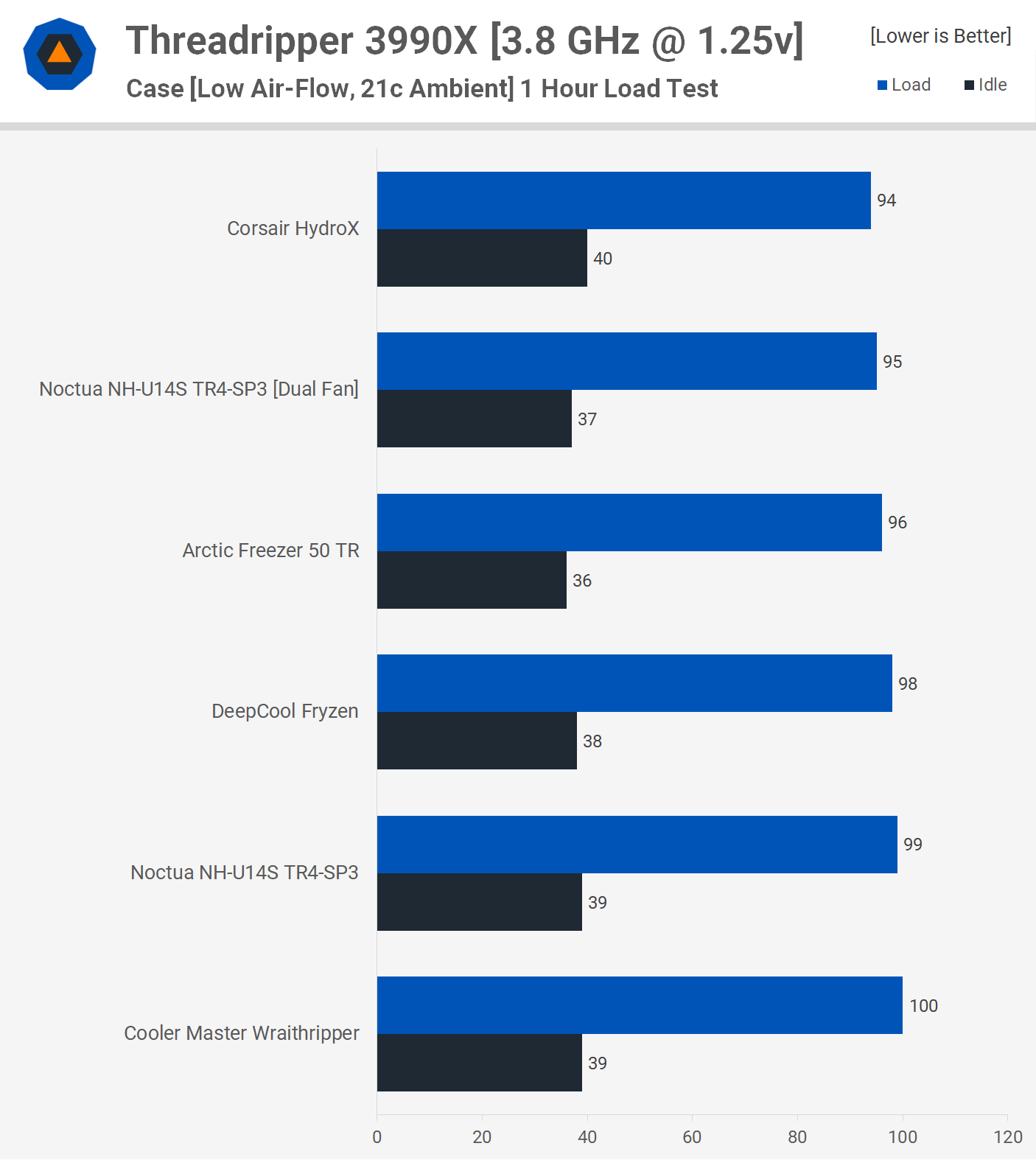
We're actually surprised by how similar the temperature results are with the 3990X overclocked to 3.8 GHz using 1.25v. We're looking at a mere 6 degree difference between the best and worst cooling solution. The Wraith Ripper managed to avoid thermal throttling despite peaking at 100C, but that's obviously not a temperature you'll want to run your $4,000 processor at for extended periods of time.
The dual fan Noctua NH-U14S did well, running a degree hotter than the Corsair HydroX custom loop. The Arctic Freezer 50 TR also performed well, though it was considerably louder than the Corsair and Noctua setups.
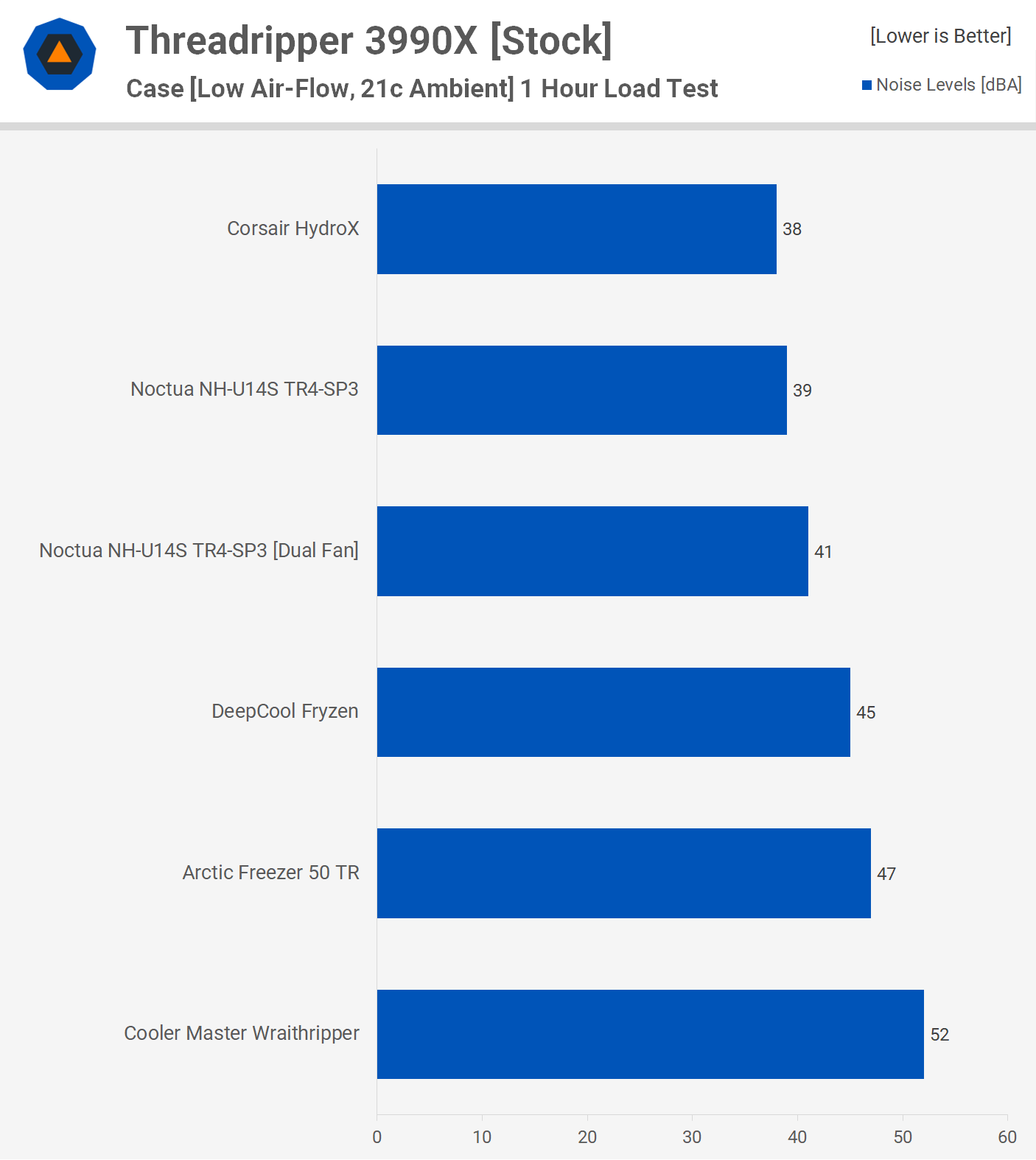
Speaking of noise, here is how much noise each configuration generated. Basically Corsair and Noctua are the kings of quiet, though we're comparing two very different products, so it's just Noctua that ears a pat on the back here. The dual fan configuration delivers the best results, running just a few decibels louder than the custom loop for a similar thermal result.
DeepCool's Fryzen did a little better than the Arctic Freezer 50 TR in that regard, while the Wraith Ripper buzzed away to the tune of 52 dBA.
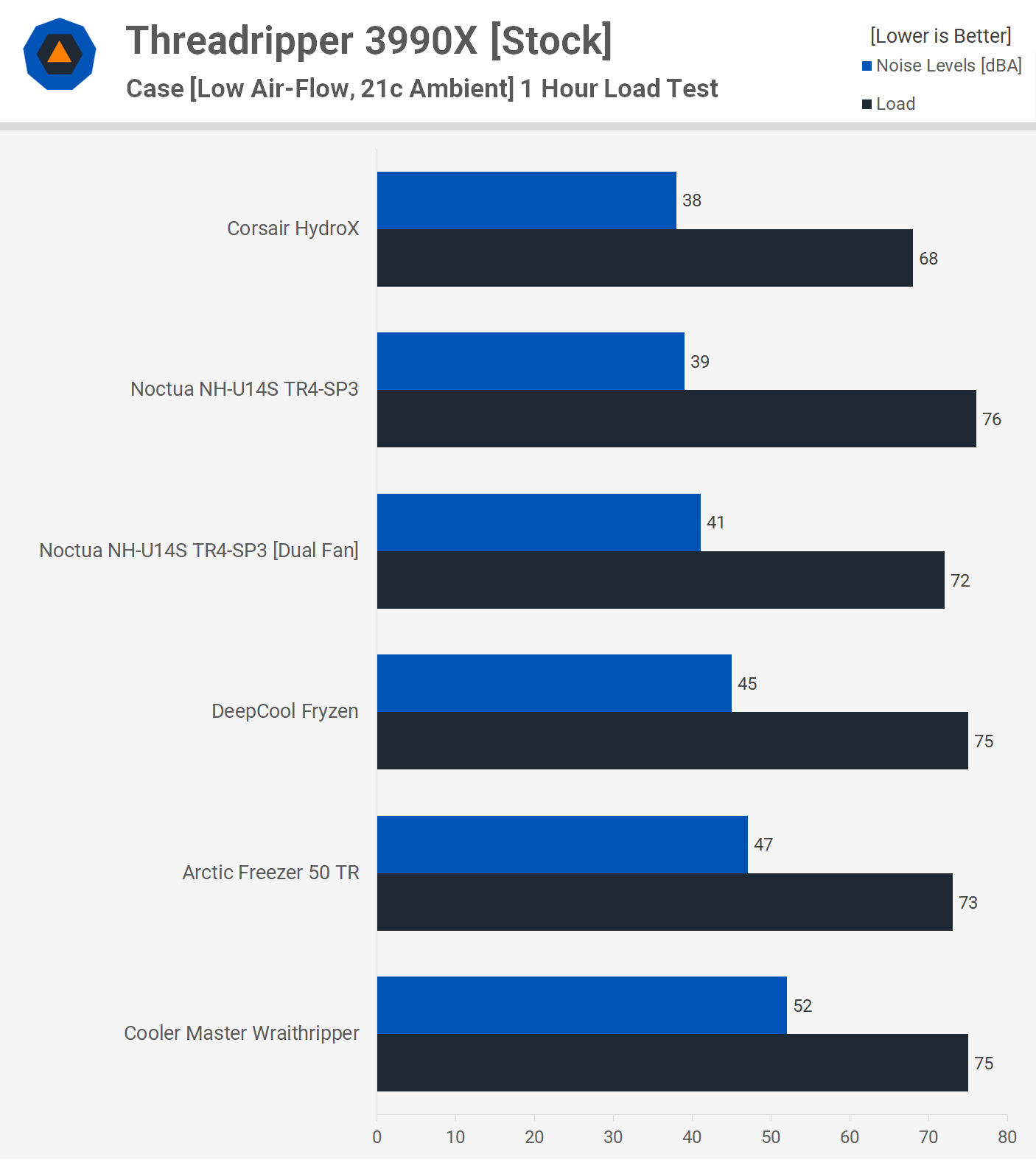
Finally, if we look at operating temperature vs. noise level we get a clearer picture of just how good the Noctua NH-U14S is. Its dual-fan configuration was noticeably quieter than the Arctic, DeepCool and Cooler Master options while delivering slightly better thermal performance.
The Arctic Freezer 50 TR and DeepCool Fryzen appear quite similar and we'd say at a normalized volume you'd be looking at identical results. The Wraith Ripper needs to have the fan spinning well above 2,000 RPM to avoid unacceptably high temps for such a massive cooler. While the design looks good, it's not very efficient or effective.
For those wondering, dropping the fan speed of the Wraith Ripper down to 1,800 RPM sees stock 3990X temps increase by around 10C.
That's So Cool
Turns out air-cooling the Threadripper 3990X is not only possible, but with something like the Noctua NH-U14S, it's also very practical, though we do recommend adding that second fan. The NH-U14S is also an affordable solution, coming in at $70, though a second NF-A15 will set you back an additional $22, for a total of $92 for the dual-fan config.
That's not much more than the $84 you'll pay for the DeepCool Fryzen. Meanwhile, Arctic asks $70 for the Freezer 50 TR. Then there's the Wraith Ripper which didn't perform very well in our testing, and it costs an eye watering $120. At that point you might as well start looking at AIO's.
While we can't recommend the Wraith Ripper because of its loud operating volume and average performance, one area where it does excel is installation. It's by far the quickest and easiest cooler to install. Where Cooler Master didn't do a good job was with that centrally located fan. Not only does it hinder performance, but after testing with three retail models we've found that after a short period of time the fan starts to make a really strange high pitched sound.
The Arctic Freezer 50 TR performs better than the Wraith Ripper and it's over 40% cheaper, so a big win there already. It's not the most quiet cooler, but it does offer a reasonable balance between thermal performance and operating volume. The installation process is a bit janky though, it's easy enough to remove the fan but clipping it back in without it rubbing on something is a little tricky. Vibration also seemed to be a big issue here, so we're dubious as to how well this thing will perform over time. Memory clearance also isn't great, anything taller than G.Skill's Trident Z and you'll be up that famous creek without a paddle.
This is an area where the DeepCool Fryzen excels. The compact design of this cooler means memory clearance is a non-issue. In fact it's remarkable just how well the Fryzen performs for a relatively small heatsink with just a single fan. It's a neat cooler that looks great and performs well enough, build quality is excellent and the installation process is fairly simple.
If you're after something that looks good and does a good job then the Fryzen is a nice option. The only issue we see is that for a few dollars more you can net yourself the Noctua NH-U14S with an extra fan, and that really is the ultimate combo for air-cooling a Threadripper CPU.
Shopping Shortcuts:
- Noctua NH-U14S on Amazon
- AMD Threadripper 3990X on Amazon
- AMD Threadripper 3970X on Amazon
- AMD Threadripper 3960X on Amazon
- AMD Ryzen 9 3950X on Amazon
- AMD Ryzen 5 3600 on Amazon
Further Testing
Since we published this review, we have run additional benchmarks and comparisons you may be interested in:

